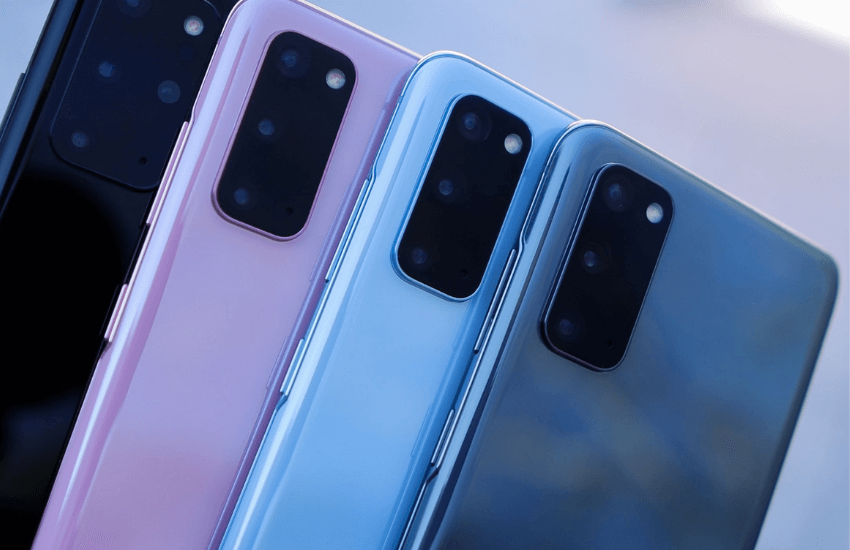Smartphone manufacturers launch several models across the globe each year. In India – the second-largest smartphone market in the world – multiple brands cumulatively launched 70 smartphones in the first half of 2020. [*]

Buyer obsession with purchasing the “latest” smartphone, coupled with BigTech’s enormous marketing and R&D budgets, makes the notion of brands launching a new handset each year sound reasonable.
And while new affordable smartphones are getting better but at the same time, old flagships are getting cheaper. Consumers can now buy an older flagship model at virtually the same price point as a brand new mid-range handset.
So, does it make sense for consumers to choose an older flagship model in 2022? The short answer – It depends.
Why are smartphones so expensive?
Phones get more expensive each year, with the average selling price of a top-of-the-range smartphone being closer to USD 1000. There are a few reasons phone prices have been soaring in the past few years.
1. Sticker shock
When people choose to finance their phone using a contract, the price of the smartphone and the service is bundled together. A typical phone contract runs anywhere between 6 months to 24 months, with the actual cost of the phone hidden away in the monthly fees plus other services (calls, text, and data).
For instance, people paid USD 200 for a brand new smartphone but were actually paying more, just in monthly installments. Also, common with these bundled contracts is the lack of information about the phone’s effective cost, leading many customers to buy their phones outright.
This explains why, a few years ago, the sticker price of mobile phones jumped dramatically, say for argument’s sake, from USD 200 to USD 650.
2. People are holding onto their smartphones longer
People are replacing their smartphones less frequently – perhaps they are built better or perhaps people are moving away from phone contracts. It may even be a sign that new smartphones aren’t perceived as better anymore.
According to data from the market research firm Kantar World Panel, the lifecycle of smartphones has been growing, especially in the US and Europe. In 2016, American smartphone owners kept their phones for 23 months on average. The number has increased to nearly 25 months in 2018.
That has left smartphone manufacturers with two choices to protect their revenue: sell more phones or sell more expensive phones. With global smartphone sales plateauing, they have chosen the latter.
3. Smartphone hardware and material

The cost of building a new high-end phone is rising. For instance, the iPhone X was launched at a starting price of USD 999. This is USD 50 more than the previous expensive iPhone, the 8 Plus 256 GB [*].
For constantly improving new smartphones, manufacturers frequently add new capabilities which usually require building new hardware. The iPhone X had additional hardware for standout features, including Face ID, an edge-to-edge AMOLED display panel, and a ForceTouch sensor beneath the screen.
Plus, some materials used in modern smartphones are scarce and expensive to source. These “Rare earths” are a group of 17 elements that play a crucial role in driving smartphone innovation.
As demand continues to spread across the world, the cost of rare earth further increases. This means production costs go up and to protect profits, smartphone manufacturers push the additional cost to the customers.
Read more: 10+ Popular Global Smartphone Statistics (2022)
New Mid-range Smartphone vs. Old Flagship Model: Who Wins?
To see which ones are better, Let’s compare two different handsets from the same brand that are available at a similar price point.
- Midrange phone: Samsung Galaxy A73 (2022)
- Flagship model: Samsung S20 (2020)
Note: At the time of writing this blog, both these phones retailed at ~USD 600.
- Build quality
When building mid-range phones, manufacturers cut corners and follow a template. It is visible in the phone’s build quality. Flagship models have superior designs made from high-quality materials such as metal and glass. Mid-range handsets normally have plastic except for Samsung, which uses “Glastic” – essentially glorified plastic.
Winner: Flagship model
- Hardware
New mid-range phones have the latest processors. But unless the flagship model is archaic, chances are the older chipset is capable and will outperform in terms of raw performance. With a focus on premium, flagship models have sharper screens and a tougher layer of protection. They come with an OLED display, which offers deeper blacks and better color contrasts than LCD.
Winner: Flagship model
- Software support
Since premium phones cost a lot of money, people prefer to own them for a longer period. So, OEMs usually push regular updates to ensure phones do not experience any issues in the next few years.
Winner: Both
- Camera
Even though cameras have come a long way on affordable smartphones, they simply cannot compete with the superior hardware that flagship models offer. Flagship handsets are equipped with high-end lenses, sensors, and software algorithms suitable for capturing higher-quality images.
Winner: Flagship model
- Performance
Phone chipsets are improving rapidly and new phones are powered by more efficient and streamlined processors. However, mid-range smartphones are designed for the average user and manufacturers may take shortcuts in areas where the daily usage experience isn’t affected. Users who are interested in mobile gaming, for example, might benefit from an older flagship model with better graphics performance.
Winner: Flagship model
- Battery
Mid-range phones make up for lost points in this category. This is mainly because of two reasons – size and life. They pack in large batteries, which translates to longer battery life. Batteries degrade over time, even if it’s unused. A boxed and sealed flagship model sitting on a shelf for two years will lose about 20 percent of its capacity after a year and continue to lose capacity with age. [*]
Winner: New mid-range smartphone
Wrapping Up
It appears, for the most part, an older flagship is a better phone. Technology is progressing but not at a pace that can close the gap between a mid-range and flagship model in just two years. But, buying a new mid-range smartphone can be more convenient. It offers longer battery life and storage gets larger each generation. They seem to be superb all-rounders, but flagship models are uncompromising in form and function, both. At the end of the day, consumers need to prioritize their needs before making a buying decision.





